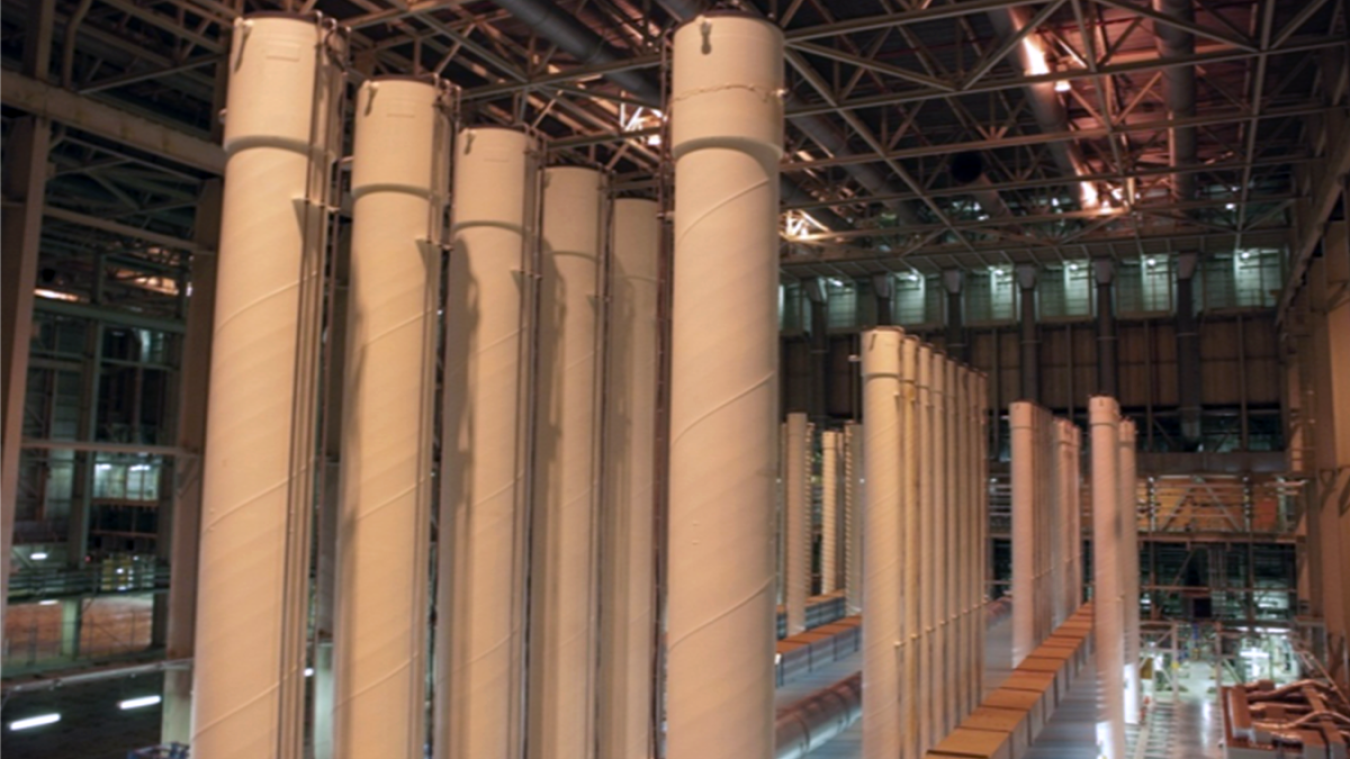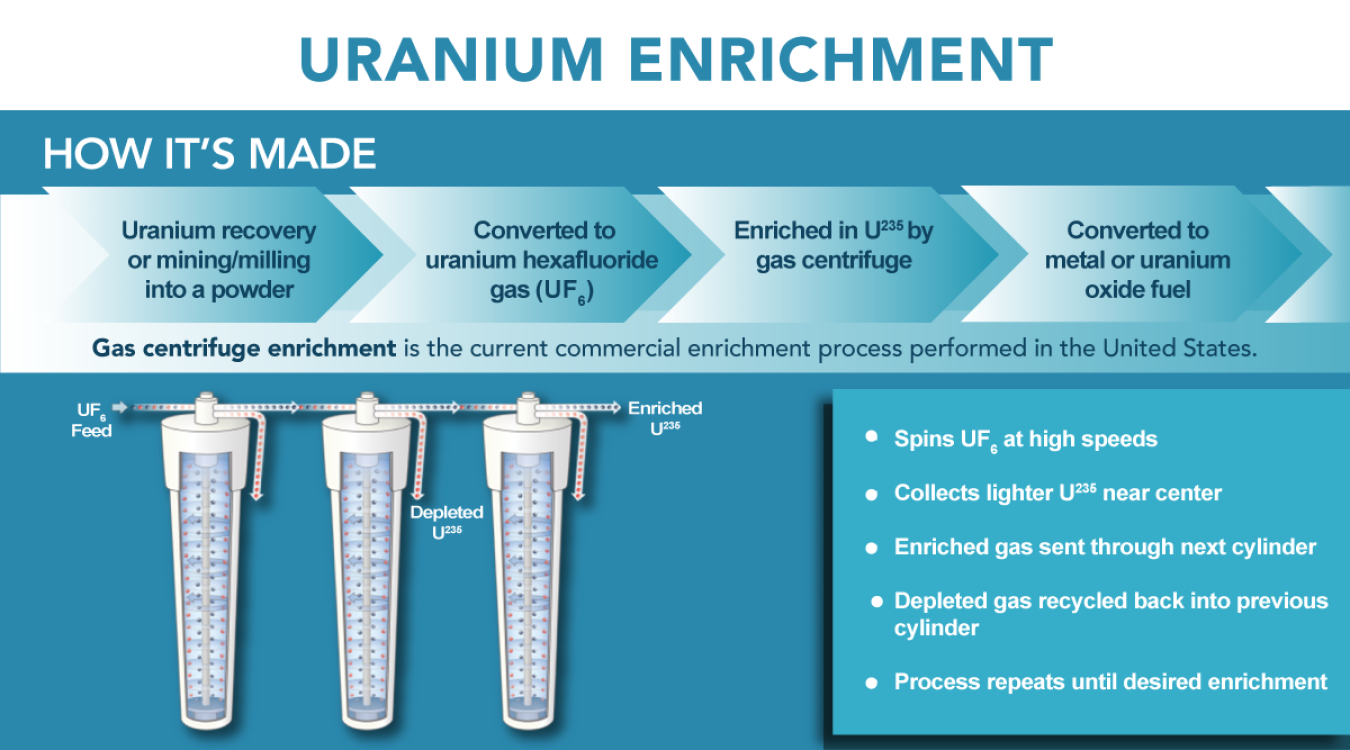Three-year project underway in Ohio to demonstrate production of HALEU fuel to support the development of new reactors.
August 4, 2020If there’s one thing America does better than anybody else, it’s innovation.
Whether that’s inventing the light bulb or powering it for the first time with nuclear energy, this country thrives on our biggest and brightest ideas.
Right now, more than 20 U.S. companies are developing advanced reactors that will completely change the way we think about the industry.
These new reactor designs will be smaller, more flexible and less expensive to build. Some would even be able to make better use of fuel resources or bring clean water and reliable power to communities in desperate need of both.
Many of these designs, however, will require a fuel that doesn’t commercially exist in the United States.
It’s what the industry calls high-assay low-enriched uranium, or HALEU for short, and these companies can’t innovate without it.
What is High-Assay Low-Enriched Uranium?
Our existing fleet of reactors runs on uranium fuel that is enriched up to 5% with uranium-235—the main fissile isotope that produces energy during a chain reaction.
By definition, HALEU is enriched between 5% and 20% and is required for most U.S. advanced reactors to achieve smaller designs that get more power per unit of volume. This allows for longer life cores, increased efficiencies and better fuel utilization.
Demonstrating HALEU Production
There’s a pressing need for HALEU now, which could force some companies to reevaluate their plans if access to this fuel is not established soon.
The industry anticipates, under the most favorable scenarios, it will need more than 425 metric tonnes of HALEU by 2030 to get these advanced reactors and microreactors to market.
To help reduce this risk, the U.S. Department of Energy (DOE) is making it a priority to establish new pathways for these companies to access HALEU.

AC-100 centrifuge cascade at American Centrifuge Plant in Piketon, Ohio.
We are currently working on an aggressive three-year project to demonstrate our ability to produce HALEU to support these new reactors.
This project, which leverages previous investments by DOE, is part of the Administration's strategy to regain U.S. global leadership in nuclear energy and should send a strong signal to potential vendors that there will be a proven domestic capability to produce HALEU when the market demands it.
We’ve partnered with Centrus Energy to demonstrate 16 of its American-manufactured centrifuges at its enrichment facility in Piketon, Ohio.
Centrus has the only U.S.-owned enrichment technology ready for this ambitious timeline.
The company’s original AC-100 machine was developed over the years with support from DOE and later refined by Centrus to the current AC-100M machine under contract with Oak Ridge National Laboratory. The machines will be used to enrich uranium hexafluoride gas to produce up to 600 kilograms of HALEU by June 2022 to support advanced reactor fuel qualification testing and reactor demonstration projects.

What’s Next?
Centrus Energy’s license amendment is currently under formal review by the U.S. Nuclear Regulatory Commission to enrich uranium up to 20%. A decision on the license amendment is expected by the fall 2021 timeframe.
Assembly of the AC-100M machines is expected to begin in November 2020, followed by construction and operation of the HALEU cascade. The centrifuges are expected to be installed and tested by December 2021, and operational by March 2022.
Following the HALEU demonstration in 2022, the AC-100M technology will be available for commercial deployment.
Follow Us
Andrew Griffith

Andrew Griffith serves as the Deputy Assistant Secretary for Nuclear Fuel Cycle and Supply Chain. Prior to this, Mr. Griffith led the Office of Nuclear Energy as Acting Assistant Secretary. He directed DOE’s research and development on advanced nuclear fuel cycle technologies that have the potential to improve resource utilization and energy generation, reduce waste generation, and limit proliferation risk.
Mr. Griffith also served in various leadership roles in the Office of Nuclear Energy, supporting the full range of nuclear energy waste management, facility operations, and technology research missions (2003-present), and the Office of Environmental Management, primarily focusing on the management of DOE’s spent nuclear fuel and high-level waste (1990-2003).
Before joining DOE, Mr. Griffith served in the U.S. nuclear submarine force and continued serving in the Naval Reserve after joining DOE. He retired from the Naval Reserve as a captain in 2009.
Mr. Griffith holds a bachelor of science degree in naval architecture from the U.S. Naval Academy and a master of science degree in technology management from the University of Maryland, University College.


